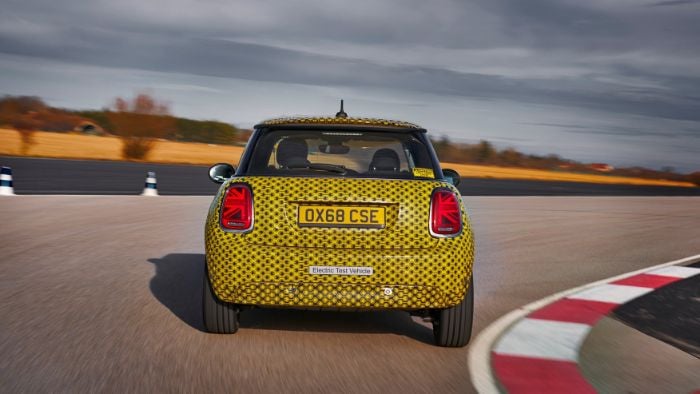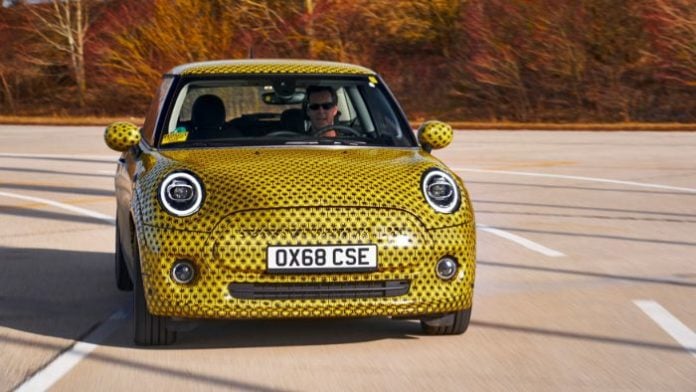If you didn’t guess by the thousands of power plugs decorating the yellow paint, this is the 2020 Mini Cooper S E – the electric version prototype of the Cooper S.
The electric Mini is a long ongoing project, which BMW started way before the Tesla craze. The first prototype came in 2008 and although it offered 204 hp and 150 miles of range, it required 700 lbs worth of batteries, which filled in the space of the rear seats and trunk.
Twelve years later, Mini has advanced significantly and is gearing up to mass produce these for sale.
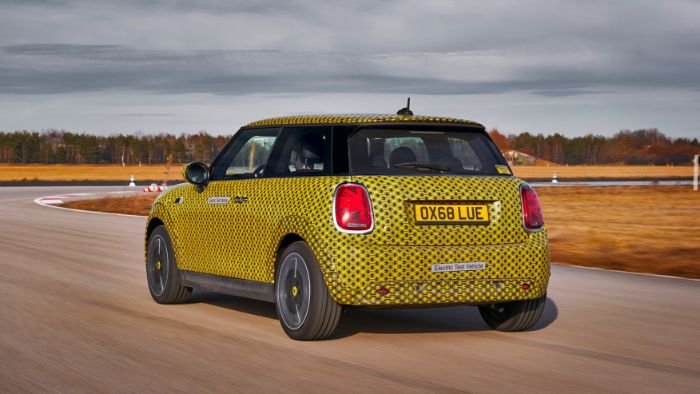
To do that, BMW is going to use an unaltered Mini Cooper S platform adapting the electric powertrain and battery fit the same space occupied by the regular powertrain of the petrol version.
This allows them to build both versions of the car in the same production line, using the same chassis and simply swap out parts. From a business investment perspective, BMW can reduce the costs and risk considerably, which are substantial in its i-Series initiative.
The electric motor is wrapped in a cradle of high-strength steel that bolts onto the same mounting points of the chassis. A steel plate is fitted underneath the engine bay to protect the powertrain components. The motor generates 181 horsepower and 199 lb-ft of torque.
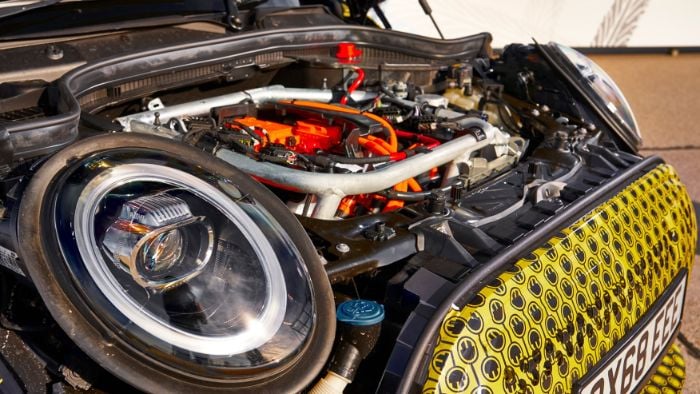
The battery stretches underneath the floors to fill the space under the rear seats, where the fuel tank used to be. To accommodate the battery, the E version is raised by 0.6 inches using suspension components from the Countryman SUV and Clubman wagon.
Even with the removal of the engine, transmission, exhaust, and fuel tank, the electric Mini still ends up 290 lbs heavier than its petrol counterpart. To improve the rigidity of the body, the A-pillars and sills are made from high-strength steel.
Passenger and cargo space is identical between the petrol and electric-powered versions. However, the battery capacity is 33 kWhr, which is only good for 118 miles. That’s enough for daily driving in the city, however, range is a definitive parameter of EVs and the Cooper S E offers half of its competitors. A Model 3 gets 220 miles, Nissan Leaf gets 226 miles and Chevy Bolt gets 238 miles of range.
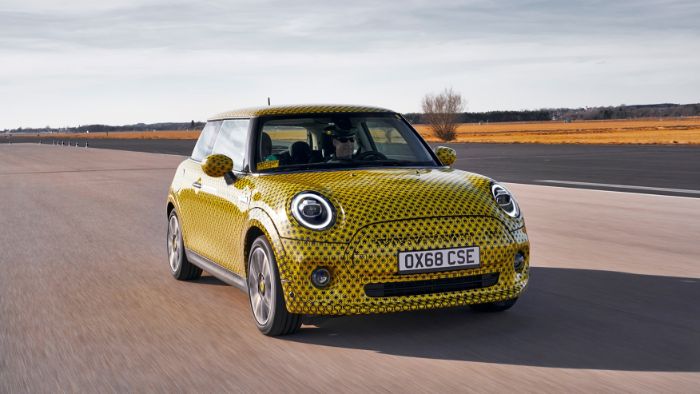
This is where BMW’s modular strategy falls short. A bespoke electric platform would have allowed engineers to use their available volume more effectively, cramming in more batteries.
On the plus side, compared to the ICE version, the EV has a 12% lower center of gravity and almost dead even weight distribution between the two axles thanks to the position of the battery. The Cooper S has 68% of its weight in the front because of the engine and transmission.
The result is better handling and stability in the EV. Couple that with the instant torque delivery and precise throttle modulation of the electric motor and you have a very engaging, capable and fun Mini.
BMW is still testing the car, so none of the numbers are final yet. The Cooper S E is scheduled to go into production in November with sales opening in the US in Q1 2020. Provided there is enough demand, 1 of every 6 cars can become an EV.
